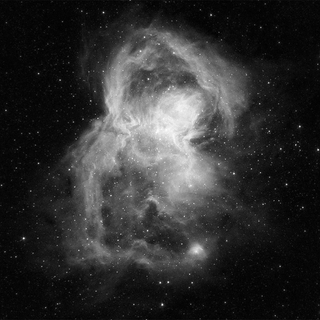Far from the Rick and Morty universe of fantastical planetary systems, scientists have found a rugby-shaped exoplanet — a planet orbiting a star other than the sun — in real life. Reportedly, this is the first time scientists have “detected the deformation” — its rugby-like shape — of an exoplanet.
For scale, this exoplanet, named WASP-103b, is twice the size of Jupiter. The newly-discovered exoplanet is revolving around WASP-103, its host star — about 1,800 light-years away from us.
A study, published in Astronomy and Astrophysics, underlines this discovery by more than 70 scientists from all over Europe. The reserachers made the discovery using CHEOPS, or CHaracterising ExOPlanets Satellite, which is a European space telescope launched in 2019 whose “objective is to determine the size of known extrasolar planets, which will allow the estimation of their mass, density, composition, and their formation.”
“It’s incredible that CHEOPS was actually able to reveal this tiny deformation… This is the first time such analysis has been made, and we can hope that observing over a longer time interval will strengthen this observation and lead to better knowledge of the planet’s internal structure,” said Jacques Laskar from the Paris Observatory, Université Paris Sciences et Lettres in France, who co-authored the study.
Located in the constellation of Hercules, the “deformation” in WASP-103b is believed to be a result of the strong tidal forces between the planet and its host star, which is 1.7 times larger than the Sun and about 200 degrees hotter.
Related on The Swaddle:
Earth Will Soon Have a Second Moon‑Like Object Orbiting It
Shape aside, the planet appears to have a similar composition and structure to that of Jupiter. In fact, Science Alert described it as “textbook hot Jupiter.” But unlike the gas giant Jupiter, explaining that “these exoplanets are gas giants like Jupiter; unlike Jupiter, however, they orbit very closely to their host stars, with orbital periods of less than 10 days.”
WASP-103b is a contrarian. This is not only because of its shape, but also because of the fact that it “seems to be spiraling away from its star — an unexpected finding given the power of WASP-103’s gravitational pull,” as Popular Mechanics put it, calling WASP-103b a “cosmic curio.” In other words, this planet seems to be moving far away from its Sun.
“If we can confirm the details of its internal structure with future observations maybe we could better understand what makes it so inflated. Knowing the size of the core of this exoplanet will also be important to better understand how it formed,” noted Susana Barros from University of Porto in Portugal, who is listed as the first author of the study.
There is still a lot more about this rugby-shaped planetary cousin to learn. At present, as with countless other space-related mysteries, scientists are pinning their hopes on the James Webb Space Telescope for answers.
“Future observations with the James Webb Space Telescope can help to… gain an unprecedented view of the interior of this hot Jupiter… This could help us to better understand these extreme systems,” the researchers noted in the study.




